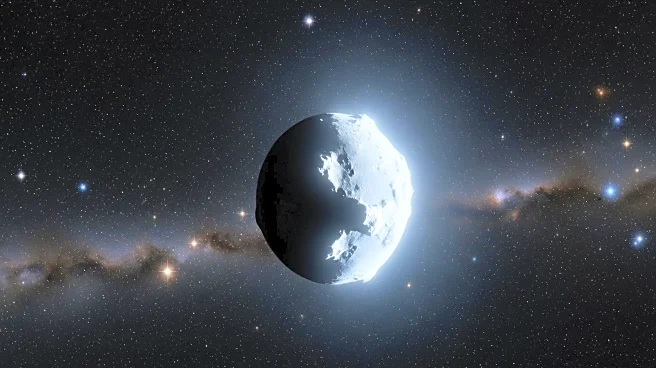What's Happening?
A team led by the Southwest Research Institute has detected methane gas on the dwarf planet Makemake using the James Webb Space Telescope. This discovery marks Makemake as the second trans-Neptunian object, after Pluto, where gas presence has been confirmed. The methane is observed in the gas phase above Makemake's surface, suggesting dynamic activity rather than a static remnant of the outer solar system. The findings indicate either a tenuous atmosphere in equilibrium with surface ices or transient activity such as sublimation or cryovolcanic plumes. Makemake, with a diameter of about 890 miles, has been a subject of scientific intrigue due to its lack of a substantial global atmosphere.
Why It's Important?
The detection of methane gas on Makemake provides new insights into the behavior and characteristics of trans-Neptunian objects, contributing to our understanding of the outer solar system. The findings challenge previous assumptions about Makemake's atmospheric conditions and surface activity, potentially leading to revised models of its evolution. This discovery highlights the capabilities of the James Webb Space Telescope in advancing planetary science and exploring distant celestial bodies. The research underscores the importance of continued observation and analysis in uncovering the mysteries of the solar system's outer regions.
What's Next?
Future observations with higher spectral resolution are planned to determine the source of methane on Makemake, whether from a thin atmosphere or plume-like outgassing. The scientific community anticipates further studies to explore the implications of these findings for understanding trans-Neptunian objects and their role in the solar system. Continued research may focus on the mechanisms driving volatile activity on Makemake, contributing to broader theories in planetary science. The team aims to integrate Webb observations with detailed spectral modeling to enhance insights into volatile-rich surfaces across the trans-Neptunian region.











